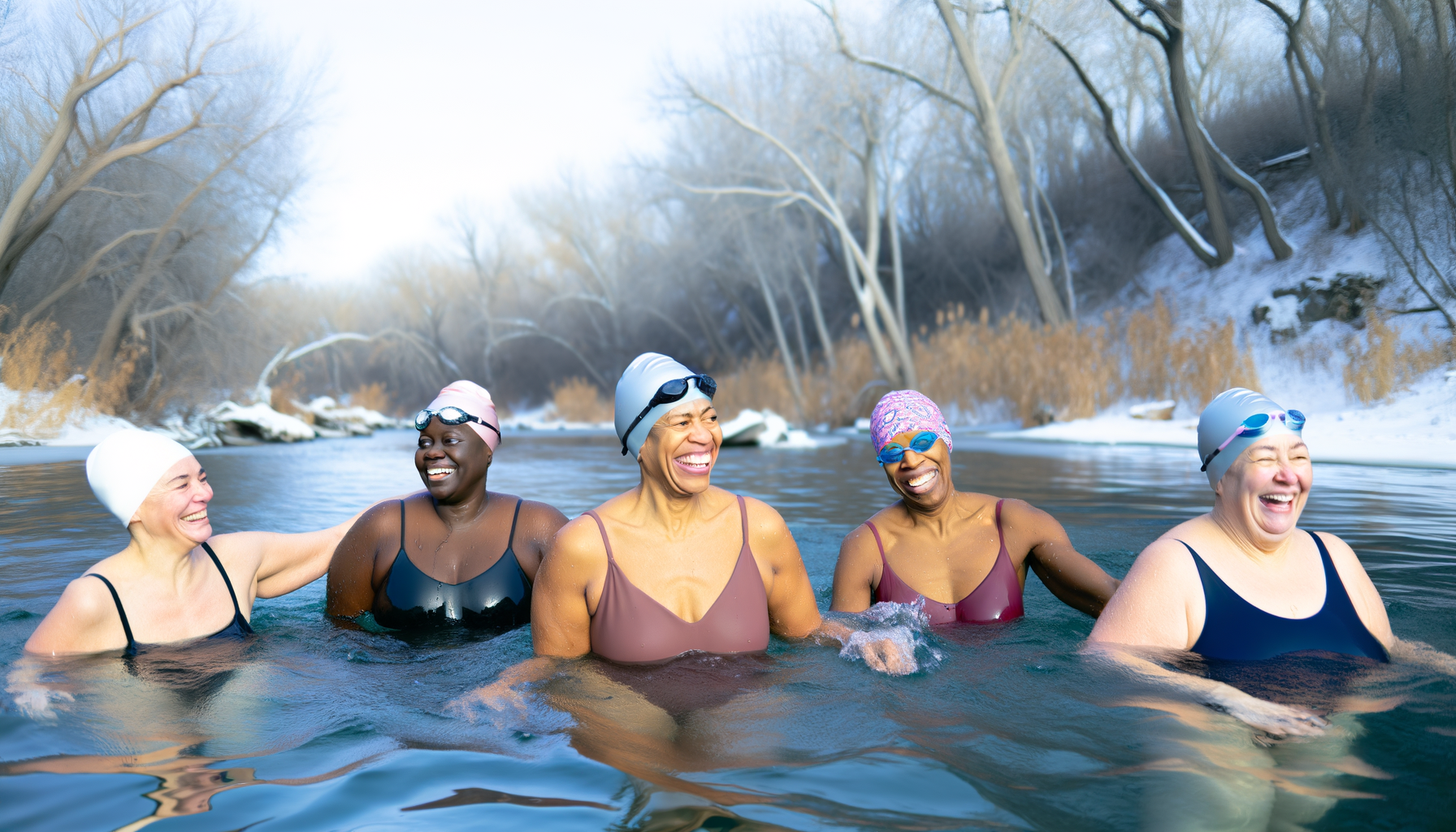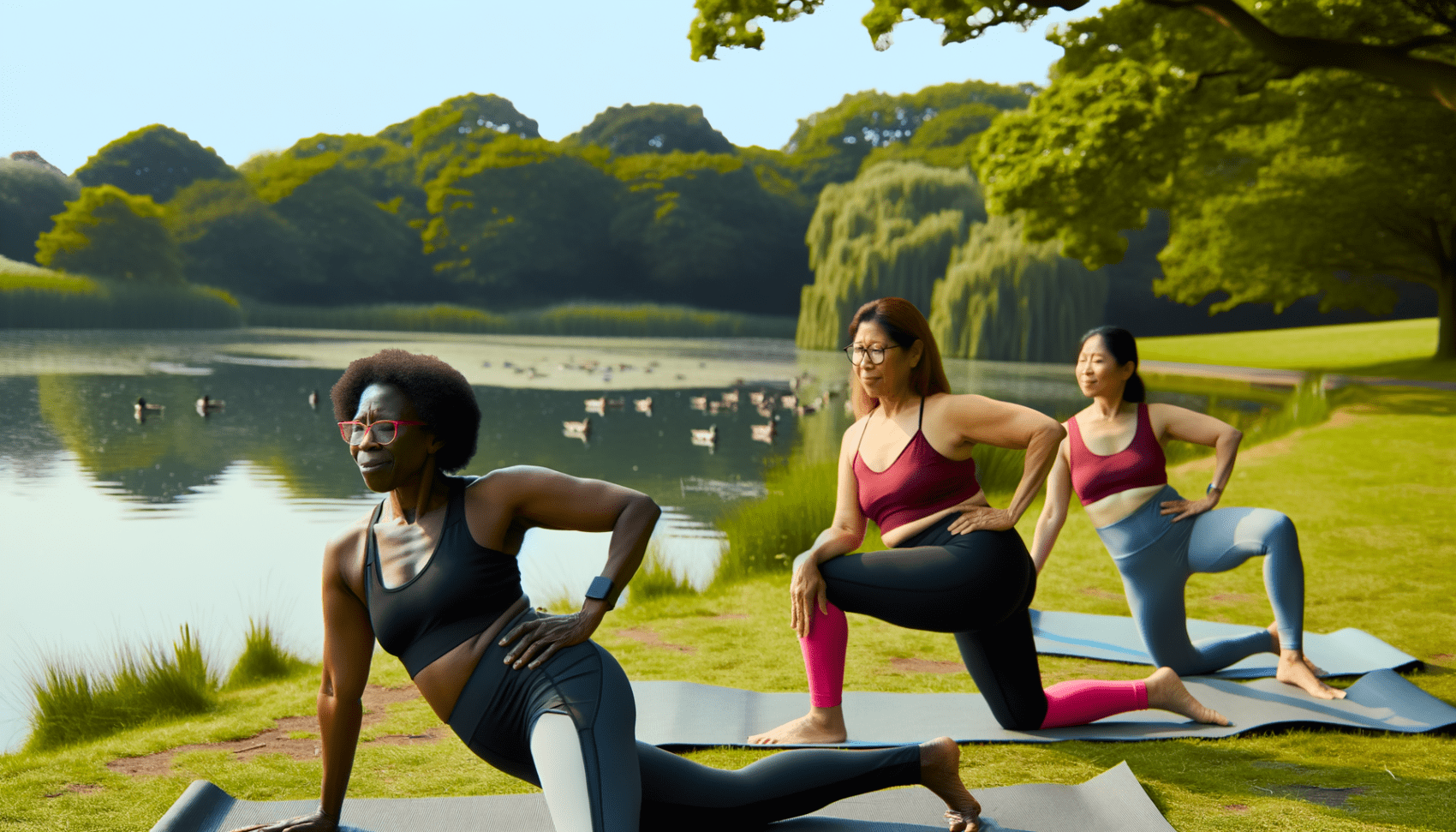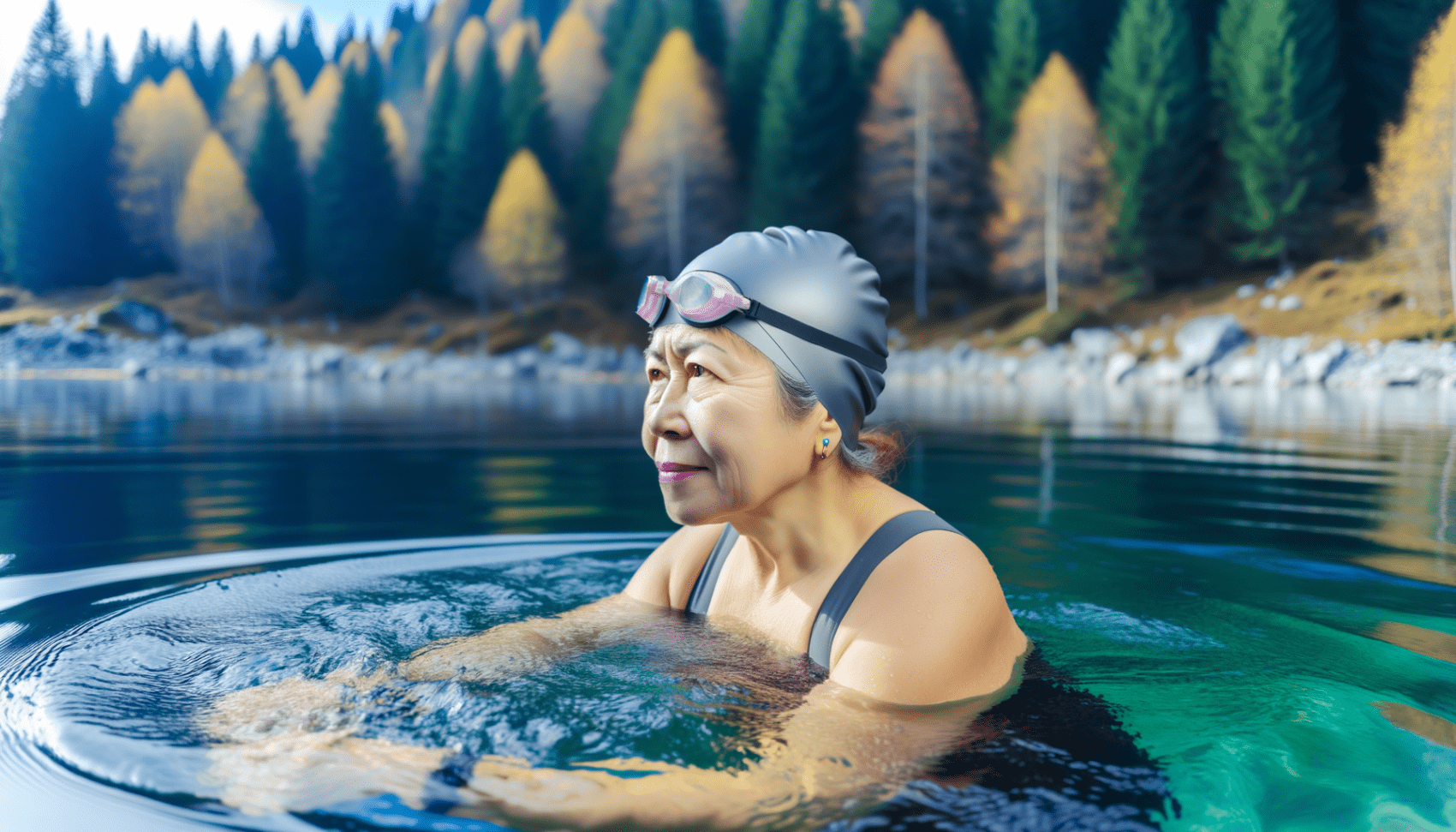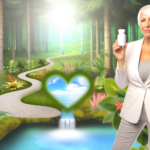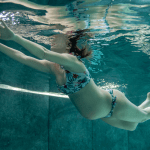Introduction to Outdoor Swimming and Menopause
The Rise of Outdoor Swimming as a Lifestyle Trend
In recent years, outdoor swimming has surged in popularity, transforming from a niche hobby into a mainstream lifestyle trend. This resurgence has been particularly notable in the UK, where an estimated one million people were regular outdoor swimmers in 2022. The appeal of swimming in natural waters – rivers, lakes, and the sea – has captivated a diverse demographic, but it holds a special allure for perimenopausal and menopausal women. A 2020 survey highlighted that a significant majority of outdoor swimmers are women over the age of 40, suggesting a unique connection between this activity and the transitional phase of menopause.
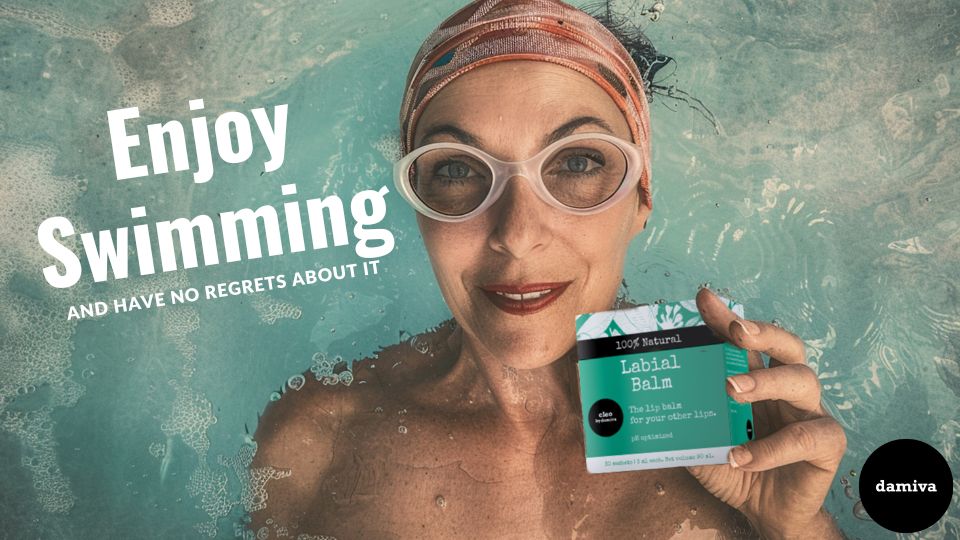
Personal Anecdotes and Societal Interest
Personal stories of transformation and joy have fueled societal interest in outdoor swimming. Anecdotes of women finding solace and community in the cold waters during their menopausal years are not uncommon. These narratives often describe a profound sense of liberation and connection, not only with fellow swimmers but also with nature itself. The media has played a role in amplifying these experiences, with outdoor swimming featuring in news articles, books, and even television programs, further cementing its status as a beneficial and inclusive pursuit.
Overview of Menopause and Its Challenges
Menopause is a natural biological process that marks the end of a woman’s reproductive years, typically occurring in the 50s or 60s. This transition can bring a host of challenges, including hot flashes, mood swings, and sleep disturbances. The perimenopausal period leading up to menopause can be particularly taxing, with fluctuating estrogen levels causing a range of physical and emotional symptoms. Each woman’s experience is unique, and the search for effective management strategies is deeply personal.
The Connection Between Outdoor Swimming and Menopause Management
Emerging research and anecdotal evidence suggest that outdoor swimming may offer significant benefits for managing menopausal symptoms. The physiological responses to cold water immersion, such as the release of stress hormones and endorphins, appear to alleviate some of the common discomforts associated with menopause. Women report improvements in mood, reduced anxiety, and a decrease in the intensity of hot flashes. Moreover, the social aspect of swimming in groups provides a supportive network that can be particularly valuable during this stage of life. As such, outdoor swimming is increasingly being embraced as a holistic approach to menopause management.
The Science of Cold Water Immersion
Understanding the body’s response to cold water
When the human body is immersed in cold water, it experiences a shock response. Initially, there is a gasp reflex followed by hyperventilation. This is the body’s immediate reaction to the sudden change in temperature. As the body adapts, blood vessels constrict to preserve core temperature, a process known as peripheral vasoconstriction. This response is crucial for survival in cold environments, as it minimizes heat loss and protects vital organs.
Interesting Read: How your choice of swimwear can impact your intimate health

The role of stress hormones and the ‘fight or flight’ response
The ‘fight or flight’ response is a physiological reaction that occurs in response to a perceived harmful event, attack, or threat to survival. During cold water immersion, the body releases stress hormones such as adrenaline and cortisol. These hormones increase heart rate and blood pressure, preparing the body to either confront or flee from the challenge. This response can be intense but is generally short-lived as the body acclimatizes to the cold water.
Endorphins, serotonin, and the post-swim ‘high’
Following the initial shock and stress response, the body releases endorphins, which are natural painkillers and mood elevators. The presence of endorphins leads to a feeling of euphoria commonly known as the post-swim ‘high’. Additionally, serotonin, a neurotransmitter associated with feelings of well-being and happiness, is also released. These chemical changes in the brain contribute to the mental health benefits reported by many outdoor swimmers.
Physiological changes during and after swimming
During and after a swim in cold water, the body undergoes several physiological changes. The metabolism increases to generate heat, which can have a calorie-burning effect. The lymphatic system, responsible for removing waste and toxins from the body, is also stimulated by the muscle contractions during swimming. Furthermore, the cold water acts as a natural anti-inflammatory, helping to reduce muscle soreness and potentially aiding in recovery. As the body warms up after the swim, there is a period of enhanced circulation as the blood vessels dilate, which can improve overall cardiovascular health.
It is important to note that while the science behind cold water immersion is promising, individuals should approach this activity with caution and respect for their own limits. The benefits can be significant, but so too can the risks if proper safety measures are not taken.
Health Benefits of Outdoor Swimming for Menopausal Women
Cardiovascular and Lymphatic Health Improvements
Outdoor swimming, particularly in cold water, has been linked to significant cardiovascular benefits for menopausal women. The shock of cold water immersion stimulates blood circulation, leading to improved elasticity and responsiveness of blood vessels. This counteracts the vascular stiffness often experienced during menopause due to declining estrogen levels. Additionally, the lymphatic system, responsible for removing waste and toxins from bodily tissues, may also see improvements in function, contributing to overall health and vitality.
Stress Adaptation and Immune Function
The act of submerging in cold water triggers the body’s stress response, releasing adrenaline and cortisol. This acute stressor can enhance the body’s ability to adapt to other stressful situations over time. Moreover, regular outdoor swimming has been associated with improved immune function and reduced inflammation, which are particularly beneficial during the menopausal transition when women may experience increased susceptibility to illness.
Potential Neuroprotective Effects and Dementia Prevention
Emerging research suggests that cold water swimming may offer neuroprotective effects, potentially reducing the risk of dementia. A study has shown that cold water swimming increases a protein called RBM3, which is known to protect against brain cell death. While further research is needed, these findings offer hope for menopausal women seeking to maintain cognitive health.
Mental Health, Mindfulness, and Emotional Well-Being
The mental health benefits of outdoor swimming are profound. The combination of exercise, immersion in nature, and the cold-water environment helps to elevate mood and reduce symptoms of anxiety and depression. Many women report a sense of mindfulness and heightened emotional well-being following a swim, as the activity demands a present-focused awareness that can quiet an overactive mind. The post-swim ‘high’, characterized by a release of endorphins and serotonin, contributes to a lasting sense of happiness and accomplishment.

The Social and Community Aspect of Outdoor Swimming
Building Camaraderie and Support Networks
Outdoor swimming is not just a solitary pursuit; it’s a conduit for creating strong bonds and support networks. The shared experience of braving the elements and the exhilarating rush of cold water immersion acts as a powerful unifier. Women, particularly those navigating the complexities of menopause, find solace and strength in the camaraderie that forms among swimmers. These groups often extend beyond the water’s edge, providing a space for open dialogue, shared experiences, and mutual encouragement. The act of swimming together fosters a unique companionship, where laughter, stories, and post-swim rituals like enjoying tea and cake become integral to the experience.
Inclusivity and Body Positivity in Swimming Communities
The inclusive nature of outdoor swimming communities stands in stark contrast to the often intimidating atmosphere of gyms and traditional pools. Here, in the open water, all are welcome regardless of shape, size, or swimming prowess. This environment champions body positivity, allowing individuals, especially menopausal women who may struggle with body image, to celebrate their bodies for what they can achieve rather than how they appear. The egalitarian nature of the water plays a significant role in this, as it strips away societal expectations and fosters a sense of equality and acceptance.
The Role of Social Media and Organizations in Promoting Outdoor Swimming
Social media has been instrumental in the rise of outdoor swimming, offering a platform for swimmers to share their experiences, organize meet-ups, and provide encouragement. Platforms like Instagram and Facebook are awash with images of joyful swimmers, which serve to inspire and invite newcomers. Organizations such as the Outdoor Swimming Society and local groups like Chill UK play a pivotal role in promoting the sport. They offer resources, structured courses, and events that make outdoor swimming accessible to a broader audience. These entities not only advocate for the physical and mental health benefits of swimming but also emphasize the importance of safety and respect for the natural environment.
In conclusion, the social and community aspects of outdoor swimming are integral to its appeal, particularly for menopausal women seeking a supportive network. The inclusivity, body positivity, and camaraderie found within these communities, bolstered by social media and dedicated organizations, create a welcoming space for all to enjoy the therapeutic benefits of swimming in nature.
Personal Journey: Integrating Outdoor Swimming into Menopause Management
A First-Hand Account of Embracing Outdoor Swimming

Enjoy swimming without the feeling of dry and sandpaper afterwards…
Annette Garcea, Damiva
My journey into the invigorating world of outdoor swimming began during a time of personal upheaval. The menopausal phase of life had crept up on me, bringing with it a host of physical and emotional challenges. I recall the day I first waded into the cold embrace of the river near my home. The initial shock of the cold water was swiftly replaced by a sense of profound awakening. Each stroke became a defiant act against the lethargy and mood swings that had become my unwelcome companions. The river, with its rhythmic flow and natural beauty, became my sanctuary, a place where I could reclaim the vitality that menopause seemed determined to erode.
The Impact on Self-Esteem and Connection with Nature
As the days turned into weeks, and weeks into months, the ritual of my morning swims began to sculpt not just my body, but my self-image. The woman who looked back at me from the mirror started to exude a confidence that I thought had been lost to the tides of hormonal change. The laughter and camaraderie of fellow swimmers, the crisp air, and the wildlife that occasionally accompanied my swims, all contributed to a newfound connection with nature. This bond with the outdoors became a powerful reminder that life, much like the seasons, is cyclical and ever-changing.
Combining HRT, Nutrition, Yoga, and Swimming for Holistic Management
Outdoor swimming did not stand alone in my quest for balance. It was the cornerstone of a holistic approach that included hormone replacement therapy (HRT), mindful nutrition, and the grounding practice of yoga. This multifaceted strategy was transformative. HRT addressed the physiological imbalances, while nutrition provided the fuel for my body’s resilience. Yoga offered mental clarity, and swimming, the joyous celebration of physical capability. Together, they formed a symphony of self-care that resonated through every aspect of my life.
The Role of Local Swimming Communities and Support Groups
The local swimming community played an indispensable role in my menopause management. These groups, often found through social media or word-of-mouth, were a wellspring of support and advice. They were a place where one could share experiences without judgment, learn from the wisdom of others, and forge friendships that extended beyond the water’s edge. The collective strength of these communities provided a network of support that was as essential to my journey as the water itself.
In conclusion, integrating outdoor swimming into my menopause management was a transformative experience that went beyond physical health. It fostered a sense of empowerment, community, and harmony with the natural world. For any woman navigating the turbulent waters of menopause, I extend an invitation to consider the embrace of open water. It may just be the ally you need to chart a course to wellness and self-discovery.
Practical Advice for Safe and Enjoyable Outdoor Swimming
Understanding and Respecting Personal Limits
Embarking on an outdoor swimming journey requires a keen awareness of one’s physical and mental boundaries. It is essential to listen to your body and recognize the signs it gives you. If you feel discomfort, pain, or excessive fatigue, it’s time to exit the water. Remember, outdoor swimming is not about pushing through at all costs; it’s about enjoying the experience and respecting your health and safety.
Guidelines for Acclimatization and Duration of Swims
Acclimatization to cold water is a gradual process. Start with short swims and progressively increase the duration as your body adapts. A good rule of thumb for beginners is to stay in the water for no more than a few minutes at a time. As you become more accustomed to the cold, you can extend your swims, but always ensure you can get out of the water feeling warm within a few minutes of exiting.
Tips for Warming Up Post-Swim to Prevent Hypothermia
After your swim, it’s crucial to warm up efficiently to prevent hypothermia. Dry off immediately and dress in warm layers that trap air close to the body. Sip a warm drink to raise your core temperature from the inside out. Avoid hot showers right after swimming, as they can cause a rapid change in blood flow and potentially lead to dizziness or fainting.
- Use a windproof layer to shield against the chill.
- Don a hat and gloves to reduce heat loss from extremities.
- Keep moving to generate body heat through physical activity.
Safety Measures and Risk Assessment
Before diving in, assess the environment for potential hazards such as tides, currents, and weather conditions. Swim in designated areas and, if possible, where lifeguards are present. Always inform someone of your swimming plans, including location and expected return time. Consider swimming with a buddy or a group for added safety. Equip yourself with a brightly colored swim cap or tow float to increase visibility in the water.
By following these practical tips and prioritizing safety, outdoor swimming can be a refreshing and invigorating part of managing menopause. It’s about finding joy and comfort in the water while ensuring a secure and positive experience.
Conclusion and Further Considerations
Summarizing the Benefits of Outdoor Swimming for Menopause
The therapeutic embrace of cold water has emerged as a beacon of relief for many women navigating the choppy waters of menopause. Research, including a significant study from University College London, has illuminated the potential of outdoor swimming to alleviate a spectrum of menopausal symptoms. Women who have integrated this practice into their lives report notable reductions in anxiety, mood swings, and hot flushes. The physical act of swimming in cold water, coupled with the mental clarity and endorphin release it stimulates, offers a holistic remedy that extends beyond the temporary relief of symptoms, fostering a deeper sense of well-being and hormonal balance.
Encouragement for Those Considering Outdoor Swimming
For those standing at the water’s edge, contemplating the plunge into outdoor swimming, let this be your sign to take the leap. The community of cold water swimmers is a testament to the power of this natural therapy. With each stroke, you join a wave of women finding solace and strength in the water’s embrace. Remember, the journey is personal and progressive; start with respect for your body’s limits and embrace the chill at your own pace.
Future Research and Potential Developments in the Field
While the current findings are promising, the scientific community acknowledges the need for further research. Future studies aim to refine our understanding of the optimal conditions for cold water swimming to maximize its benefits for menopausal symptom management. This includes determining the ideal frequency, duration, and water temperature that offer the greatest relief with minimal risk.
Final Thoughts on the Holistic Approach to Menopause Management
Menopause, a natural phase in a woman’s life, calls for a management approach that is equally natural and empowering. Outdoor swimming, with its myriad of benefits, stands out as a complementary therapy that aligns with the holistic ethos of treating the body, mind, and spirit. It is a practice that not only cools the physical symptoms of menopause but also ignites a sense of community, resilience, and connection with nature. As we continue to explore and understand the depths of its potential, outdoor swimming shines as a beacon of hope for a balanced and joyful transition through menopause.

Feeling You Have a Right to Safe Beauty & Fem Care?
If so, it may be time for a change. It starts with knowledge. We have a few suggestions in our new guides.
